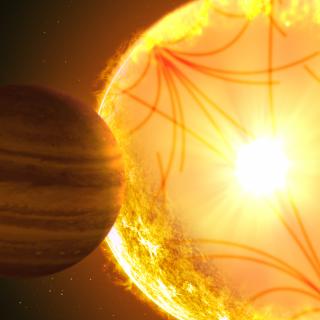Bibcode
Korth, Judith; Chaturvedi, Priyanka; Parviainen, Hannu; Carleo, Ilaria; Endl, Michael; Guenther, Eike W.; Nowak, Grzegorz; Persson, Carina M.; MacQueen, Phillip J.; Mustill, Alexander J.; Cabrera, Juan; Cochran, William D.; Lillo-Box, Jorge; Hobbs, David; Murgas, Felipe; Greklek-McKeon, Michael; Kellermann, Hanna; Hébrard, Guillaume; Fukui, Akihiko; Pallé, Enric; Jenkins, Jon M.; Twicken, Joseph D.; Collins, Karen A.; Quinn, Samuel N.; Šubjak, Ján; Beck, Paul G.; Gandolfi, Davide; Mathur, Savita; Deeg, Hans J.; Latham, David W.; Albrecht, Simon; Barrado, David; Boisse, Isabelle; Bouy, Hervé; Delfosse, Xavier; Demangeon, Olivier; García, Rafael A.; Hatzes, Artie P.; Heidari, Neda; Ikuta, Kai; Kabáth, Petr; Knutson, Heather A.; Livingston, John; Martioli, Eder; Morales-Calderón, María; Morello, Giuseppe; Narita, Norio; Orell-Miquel, Jaume; Osborne, Hanna L. M.; Palakkatharappil, Dinil B.; Pinter, Viktoria; Redfield, Seth; Relles, Howard M.; Schwarz, Richard P.; Seager, Sara; Shporer, Avi; Skarka, Marek; Srdoc, Gregor; Stangret, Monika; Thomas, Luis; Van Eylen, Vincent; Watanabe, Noriharu; Winn, Joshua N.
Bibliographical reference
The Astrophysical Journal
Advertised on:
8
2024
Journal
Citations
8
Refereed citations
7
Description
We report the discovery and characterization of a small planet, TOI-1408 c, on a 2.2 day orbit located interior to a previously known hot Jupiter, TOI-1408 b (P = 4.42 days, M = 1.86 ± 0.02 M Jup, R = 2.4 ± 0.5 R Jup) that exhibits grazing transits. The two planets are near 2:1 period commensurability, resulting in significant transit timing variations (TTVs) for both planets and transit duration variations for the inner planet. The TTV amplitude for TOI-1408 c is 15% of the planet's orbital period, marking the largest TTV amplitude relative to the orbital period measured to date. Photodynamical modeling of ground-based radial velocity (RV) observations and transit light curves obtained with the Transiting Exoplanet Survey Satellite and ground-based facilities leads to an inner planet radius of 2.22 ± 0.06 R ⊕ and mass of 7.6 ± 0.2 M ⊕ that locates the planet into the sub-Neptune regime. The proximity to the 2:1 period commensurability leads to the libration of the resonant argument of the inner planet. The RV measurements support the existence of a third body with an orbital period of several thousand days. This discovery places the system among the rare systems featuring a hot Jupiter accompanied by an inner low-mass planet.
Related projects

Helio and Astero-Seismology and Exoplanets Search
The principal objectives of this project are: 1) to study the structure and dynamics of the solar interior, 2) to extend this study to other stars, 3) to search for extrasolar planets using photometric methods (primarily by transits of their host stars) and their characterization (using radial velocity information) and 4) the study of the planetary
Savita
Mathur

Exoplanets and Astrobiology
The search for life in the universe has been driven by recent discoveries of planets around other stars (known as exoplanets), becoming one of the most active fields in modern astrophysics. The growing number of new exoplanets discovered in recent years and the recent advance on the study of their atmospheres are not only providing new valuable
Enric
Pallé Bago